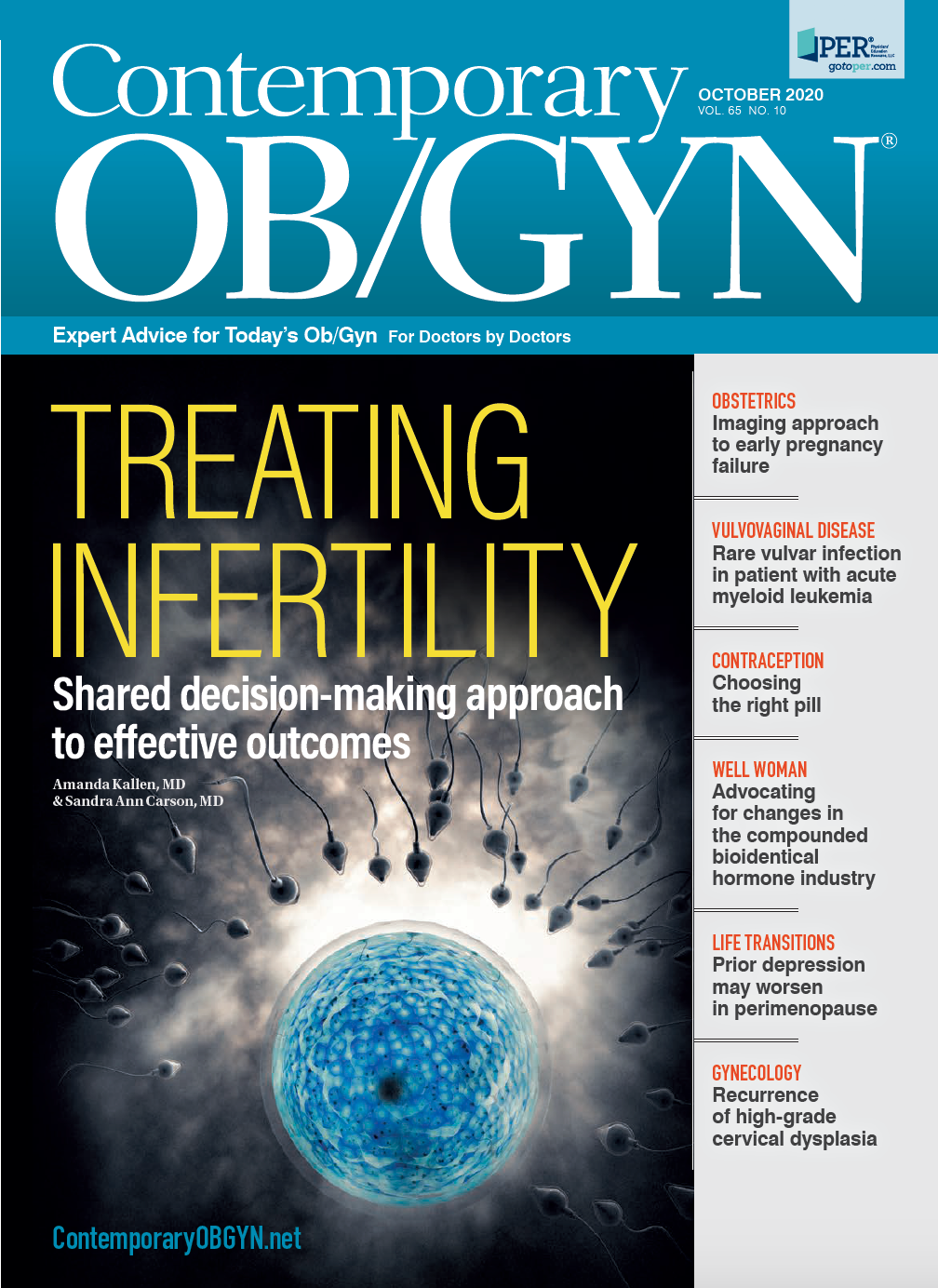Stand firm with science
Peer-Reviewed
The compounded bioidentical hormone industry needs major changes in oversight to keep consumers safe.
The path that led to American women favoring compounded bioidentical hormone therapy (cBHT) is rooted in several important historical factors. The Dietary Supplement Health and Education Act of 1994 specifically exempted compounded hormones from being considered pharmaceuticals; instead, they were put into the same category as dietary supplements.
This designation requires far less rigor in terms of quality control, no need for adverse event reporting, and carries no requirements for potential conflicts of interest disclosures. Penalties for false advertising are rare.
In 2002, the Women’s Health Initiative (WHI) showed that estrogen and progesterone were ineffective as preventives for cardiovascular disease for women and confirmed that ‘conventional’, FDA-approved forms of hormone therapy carried health risks.
Overall, hormone therapy caused net harm or gave no benefit to most of the women who had been taking it for treatment other than for symptoms. As a result, millions of women abruptly abandoned their hormone therapy. Many doctors who had prescribed it for preventive purposes were loath to accept the WHI data.
The information gap was filled by cBHT. Because cBHT products were now dietary supplements, they were not subject to FDA approval; they had no restraints on proof of claim or efficacy and had no adverse event reporting requirements.
Moreover, the claim that cBHT, which contained ‘natural’ –as opposed to ‘synthetic’ hormones used in research trials such as the WHI—developed great resonance in the consumer sphere.
The concept that naturally occurring hormones were harmless began to be promulgated and provided women with a new, alternative treatment that seemed to be superior.
Although many naturally occurring hormone products got approved by the FDA during and immediately after the WHI and rapidly became widely available, the cBHT industry effectively used internet-based marketing and repetition of partial truths to garner a significant portion of the dwindling hormone therapy market.
The mythology that the hormones used in the WHI were simply the ‘wrong’ hormones, and alternative cBHT products had no such side effects or risks and would, indeed, prevent aging, was widely and successfully marketed such that current estimates are that one-third to half of the national use of menopausal hormone therapy is cBHT.1
‘Natural’ hormones have become highly desired by consumers, and are incorrectly viewed as without risk, in comparison to FDA-approved ‘synthetics’ used in many research trials.
Many cBHT prescribers and compounders have financial interest in prescribing and continuing therapy. Consumers may be recommended to use a proprietary cBHT formulation as well as a panel of ‘customized’ proprietary blood or saliva tests to follow hormone levels, with no requirement for patient disclosure. Prescribing proprietary cBHT preparations for a profit creates an overt conflict of interest and may violate professional ethics.2
Due to several concerns raised by these ongoing practices, the National Academies of Sciences, Engineering, and Medicine (NASEM)3 conducted an 18-month review of the field, gathering data and taking in-person testimony from pharmacists, practitioners, and patients.
Their recommendations recently have been released and are supported by the North American Menopause Society (NAMS).4 The chief recommendations relevant to many ob/gyns are summarized below and offer an excellent starting point to rein in potentially harmful medical practice in our field.
NASEM Recommendations
1. Review select bioidentical hormone therapies and dosage forms as candidates for the FDA Difficult to Compound list.
Drugs considered ‘difficult to compound’ are defined as “drugs or categories of drugs that present demonstrable difficulties for compounding that are reasonably likely to lead to an adverse effect on the safety or effectiveness of the drug or category of drugs.”5
The NASEM report suggests the Pharmacy Compounding Advisory Committee (PCAC) review the following cBHT hormones as candidates for this list: estradiol, estrone, estradiol cypionate, estriol, dehydroepiandrosterone, pregnenolone, progesterone, testosterone, testosterone cypionate, and testosterone propionate. They also recommend that all cBHT in pellet form be added to this list.
The six criteria presented to the PCAC for evaluating whether a drug product or category of drug products is demonstrably difficult to compound are complexity of the:
- formulation;
- drug delivery mechanism;
- dosage form;
- achieving bioavailability;
- compounding process; and
- physicochemical or analytical testing.4
The ‘difficult to compound’ designation prevents compounding pharmacies from making cBHT products unless they are listed as a manufacturer. This recommendation is the first step towards improved quality control, which is important for cBHT as these commonly used preparations have a dearth of data specifically related to bioavailability and product-to-product variability given drug formulations differ and quality control varies from formulation to formulation in currently unknown ways.
2. Improve education for prescribers and pharmacists who market, prescribe, compound, and dispense cBHT preparations.
NASEM recommends that State medical boards and professional medical societies advocate for state-level certification for those who want to begin or continue prescribing.
Additionally, professional societies (AMA, NAMS) that are not-for-profit could help establish evidence-based recommendations and guidelines. Education from industry is discouraged. Education would include identification of safe formulations and contraindications to treatment, description of conflicts of interest, and reasoning for when to consider cBHT over FDA-approved products.
Although prescribers are responding to patient demand, this does not supersede practice informed by evidence. Given this breach in obligation to patient safety, it is possible that prescribers could face consequences including invalidation of malpractice insurance, personal liability, or possible criminal charges.
3. Additional federal and state-level oversight should be implemented to better address public health and clinical concerns regarding the safety and effectiveness of compounded cBHT.
The report calls on the National Association of Boards of Pharmacy (NABP) and state boards of pharmacy to expand and improve oversight and standardization.
Among the most significant suggested measure is that cBHT products include an insert containing critical details about the preparation, including active ingredients and a statement that the preparation is not FDA approved and therefore lacks the rigorous dosage, safety and efficacy data required by the FDA.
Pharmacies are called upon to disclose their good manufacturing practices or United States Pharmacopeia (USP) designation and to include contact information for the pharmacy and those responsible for quality and safety.
Boxed warnings for adverse effects identical to that required for FDA-approved estrogens, androgens and progestins was recommended. Pharmacies providing cBHT were also called upon to create a robust methodology for surveillance and data collection of adverse events, as well as make that information available to the public.
There is no current insight into the prevalence of such events as they are not reported or available to the consumer. NASEM calls for required adverse event reporting of cBHT to state boards of pharmacy as well as to MedWatch and the FDA Adverse Event Reporting System. This would allow states to respond to these issues locally.
Lastly, all states should adopt USP standards to meet minimum quality standards for sterile and non-sterile cBHT preparations.
4. Collect and disclose conflicts of interest.
cBHT is often sold directly by the prescriber, which violates professional ethical conduct and is a clear example of a conflict of interest (COI).6
Many providers of cBHT are physicians and advanced practice providers with credentials that patients believe to mean that they are well informed and practicing safe medicine.
Disclosures of COI should be publicly available and disclosed to patients at the point of care. NASEM also recommends that state licensing boards collect and make public financial relationships so that these COIs are easily accessible to all consumers.
5. Strengthen and expand the evidence base on the safety, effectiveness, and use of cBHT preparations.
NASEM calls for increased engagement in research to generate a comprehensive evidence base for cBHT use. Assuming patient interest is here to stay, we need to provide consumers with the same breadth of safety data and industry accountability that the FDA-approved meds possess.
This goal will require funding and clinical research with high-quality trials, generation of bioavailability data of active ingredients, and adverse event reporting. These trials should be approved and registered by the Institutional Review Board (IRB).
6. Restrict the use of cBHT preparations.
There are select scenarios in which compounding is helpful. Some people may have an allergy to an active ingredient in all possible appropriate FDA approved formulations, and this is the most common reason to use compounded drugs in all categories.
Other users may also require a dosage unavailable via FDA approved formulation. cBHT use should be limited to these select scenarios.
When prescribing, it should be made clear that compounded formulations are not FDA approved and thus have limited safety and efficacy data. Of importance, the report is very clear that patient preference alone should not be a reason to prescribe cBHT. We understand there is patient demand, but educated decision making and doing no harm must take precedence.
The 350-page NASEM report recommends long-overdue measures that will protect consumers from unsafe health outcomes.
Prescribers and pharmacies alike have a duty to provide the safest treatments, and to do so requires significantly more data and regulation than is currently present. Without evidence, oversight, and reporting systems in place, patients are poorly equipped to make informed and safe decisions. “When statements about cBHT are inaccurate or misleading, informed consent cannot take place.”7
All healthcare providers take an oath to do no harm, but without more education, data, oversight, and patient education, harm is not only possible but likely. We can do better, and NASEM provides excellent recommendations to help us to take steps in the right direction.
__
About the Authors
Jill Liss, MD

DR. LISS is an assistant professor of obstetrics and gynecology at the University of Colorado Denver School of Medicine. She also is the OB/GYN Clerkship Director.
Nanette Santoro, MD

DR. SANTORO is professor and E. Stewart Taylor Chair of Obstetrics & Gynecology at the University of Colorado School of Medicine in Aurora, Colo.
__
References
- Pinkerton JV, Santoro N. Compounded bioidentical hormone therapy: identifying use trends and knowledge gaps among US women. Menopause. 2015;22:926-936.
- Rosenthal, MS. Ethical problems with bioidentical hormone therapy. Int J of Impotence Research. 2008;20:45-52. https://www.nature.com/articles/3901622
- National Academies of Sciences, Engineering, and Medicine 2020. The Clinical Utility of Compounded Bioidentical Hormone Therapy: A Review of Safety, Effectiveness, and Use. Washington, DC: The National Academies Press. https://doi.org/10.17226/25791.
- The North American Menopause Society. NAMS Applauds NASEM Efforts on Compounded Bioidentical Hormone Therapy. Accessed July 13, 2020. Menopause.org
- Federal Register. Public docket on Drug Products That Present Demonstrable Difficulties for Compounding Under the Federal Food, Drug and Cosmetic Act. Accessed Sept. 11, 2020. www.federalregister.gov
- Rosenthal, MS. Ethical problems with bioidentical hormone therapy. Int J of Impotence Research. 2008;20:45-52. https://www.nature.com/articles/3901622
- Rosenthal, MS. Ethical problems with bioidentical hormone therapy. Int J of Impotence Research. 2008;20:45-52. https://www.nature.com/articles/3901622

Low creatinine-to-cystatin C ratio linked to postmenopausal muscle loss
March 20th 2025A new study finds that postmenopausal women with a reduced creatinine-to-cystatin C ratio experience decreased muscle volume and slower walking speed, highlighting its role as a potential biomarker for muscle health.
Read More
Intentional weight loss linked to lower mortality in postmenopausal women
March 11th 2025A recent study shows that intentional weight loss significantly lowers all-cause, cancer, and cardiovascular mortality risks among postmenopausal women, highlighting the importance of targeted weight management.
Read More
